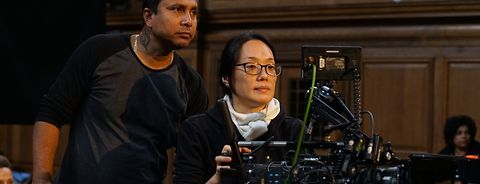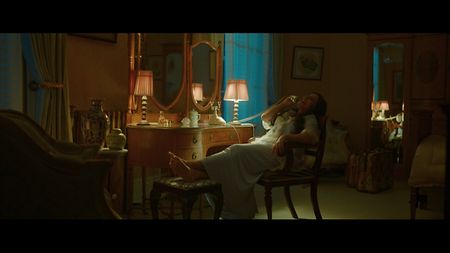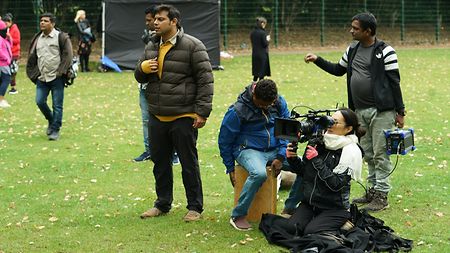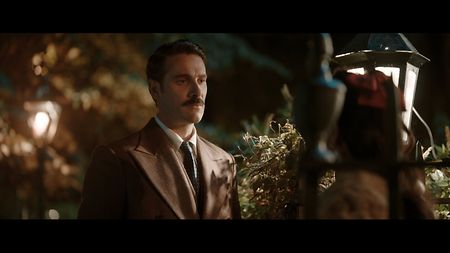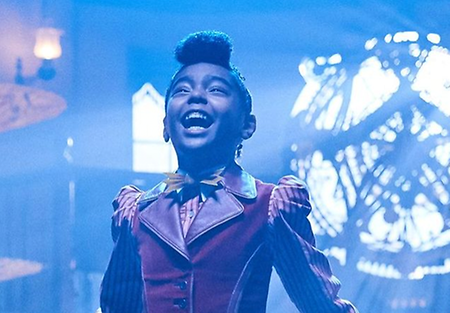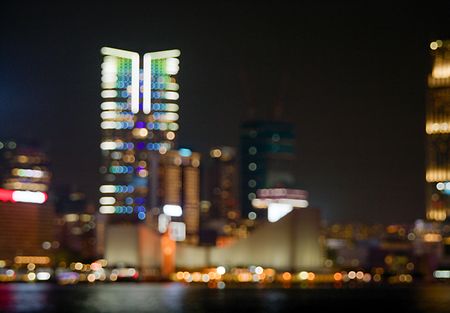What guided your overall approach to shooting this film?
The movie goes back and forth between a lot of different time periods, and also between India and London. Since the story is not told chronologically, I didn’t want the audience to get confused, so I developed a distinct color palette for each era, using my own LUTs and also changing the color temperature in-camera. There is a big scene towards the end when Shakuntala and her daughter are in a London lawyer’s office. It is set in the year 2000, and for that I chose a much colder tone and soft lighting, with a cleaner look. This contrasts with earlier scenes set in India, when I used stronger backlight, warmer colors, and put haze inside rooms so we see shafts of light coming through windows.
We didn’t have a big budget and time was limited. Our only shooting locations were London and Mumbai, but there are scenes set all over the world. Often, we had to create two or three different setups at a single location, for example making the same place look like Los Angeles for one scene and London for another. It meant the director and I often had to be creative with focal length and depth of field, to not show too much when doubling locations, and rely on color and texture to give a sense of place.
Why did you choose to shoot large-format with ALEXA LF?
Before this movie I shot another Indian film called “Tanhaji: The Unsung Warrior,” which was a period action film. It was the first time I used the ALEXA LF with Signature Primes, and I really enjoyed the combination. When I got the opportunity to shoot “Shakuntala Devi” I knew immediately that I wanted to do the same again.
